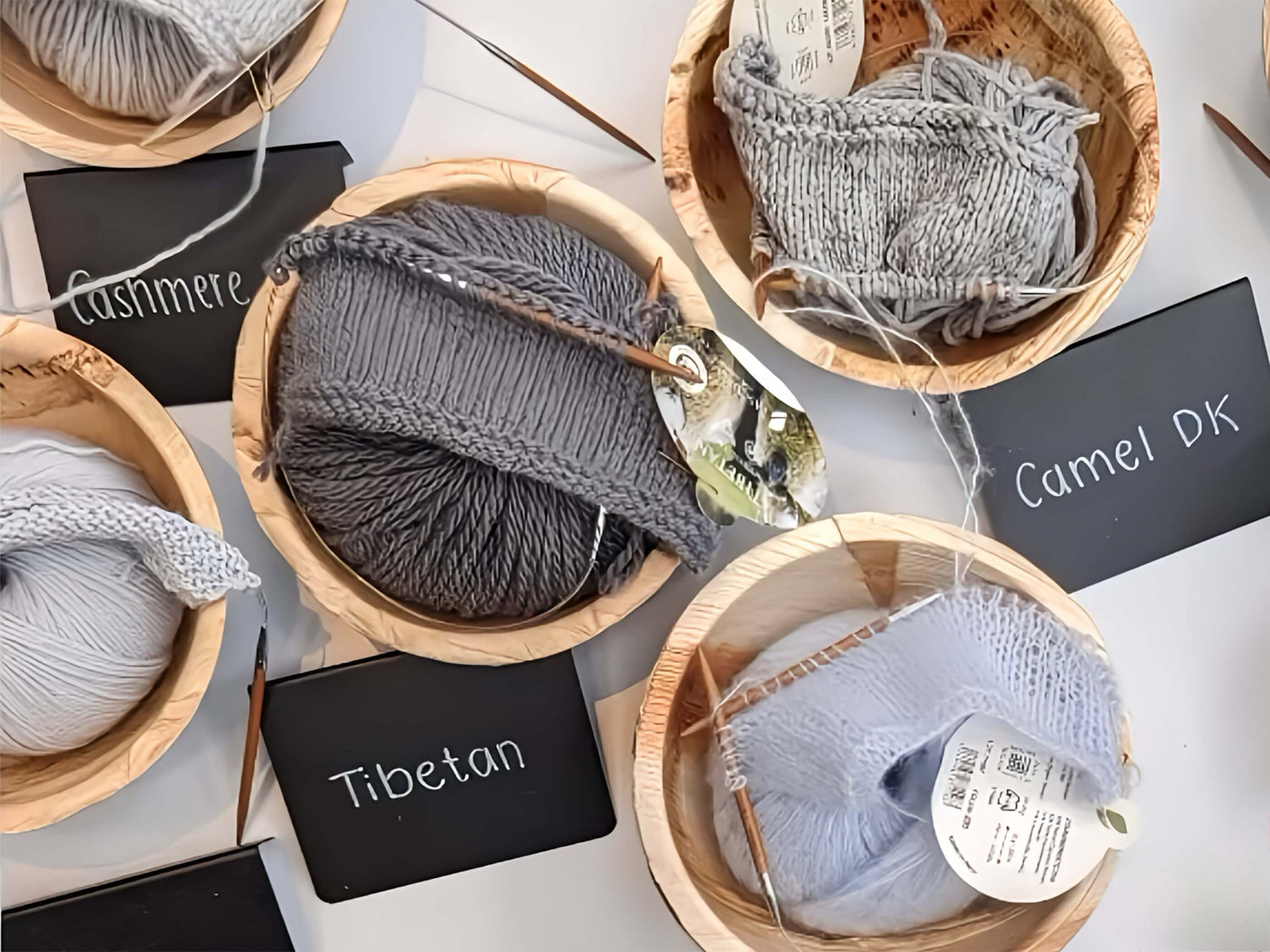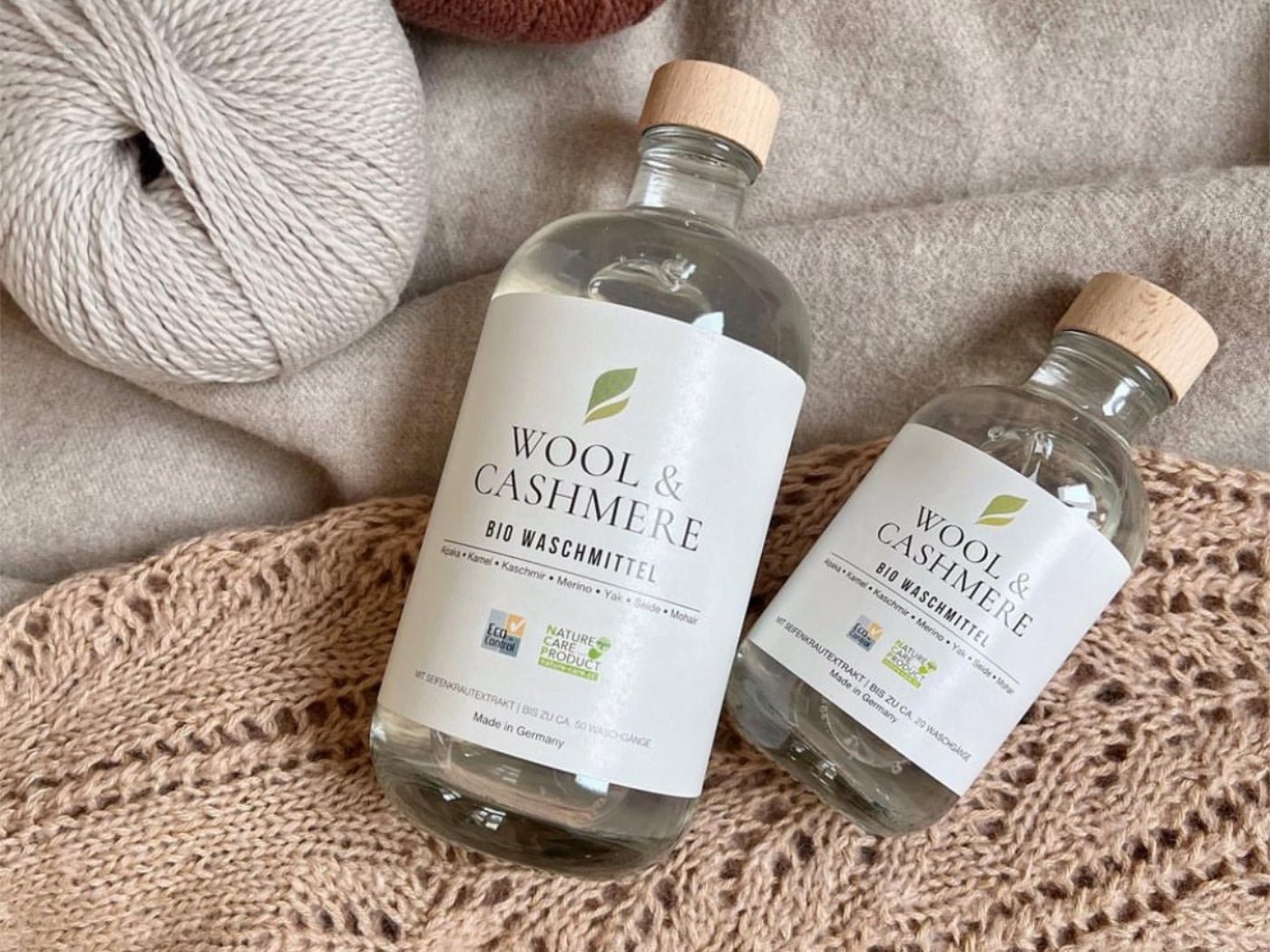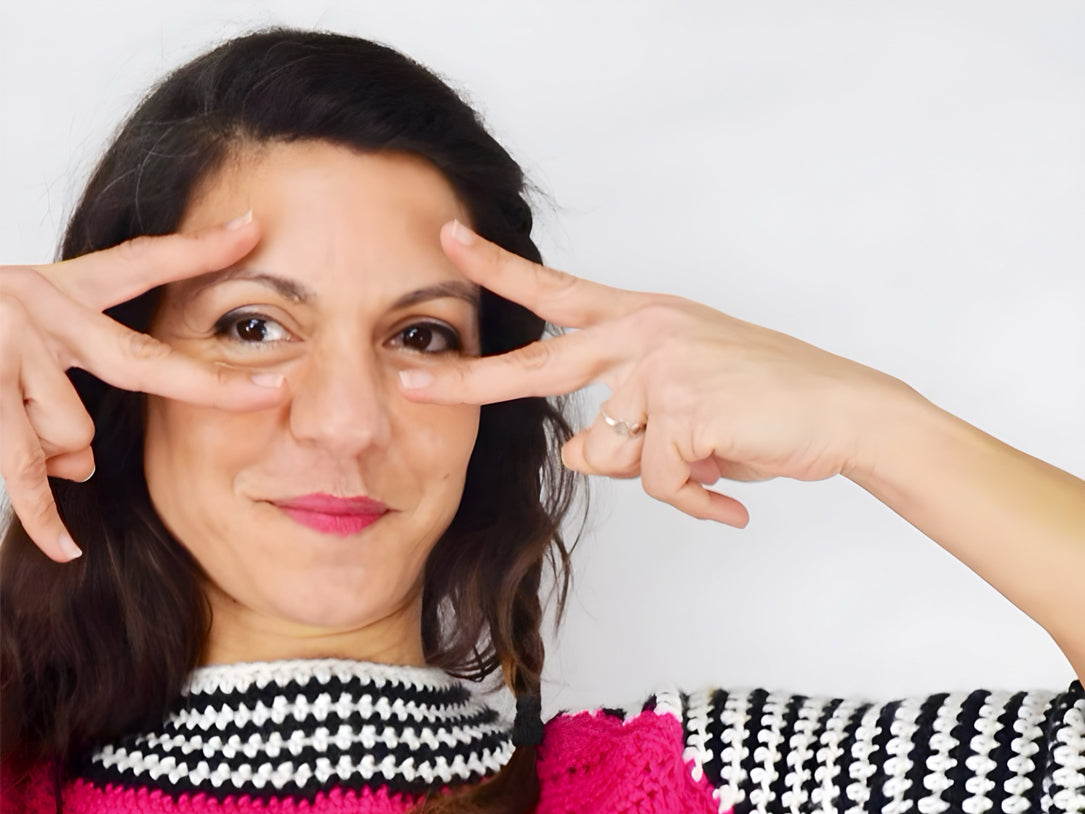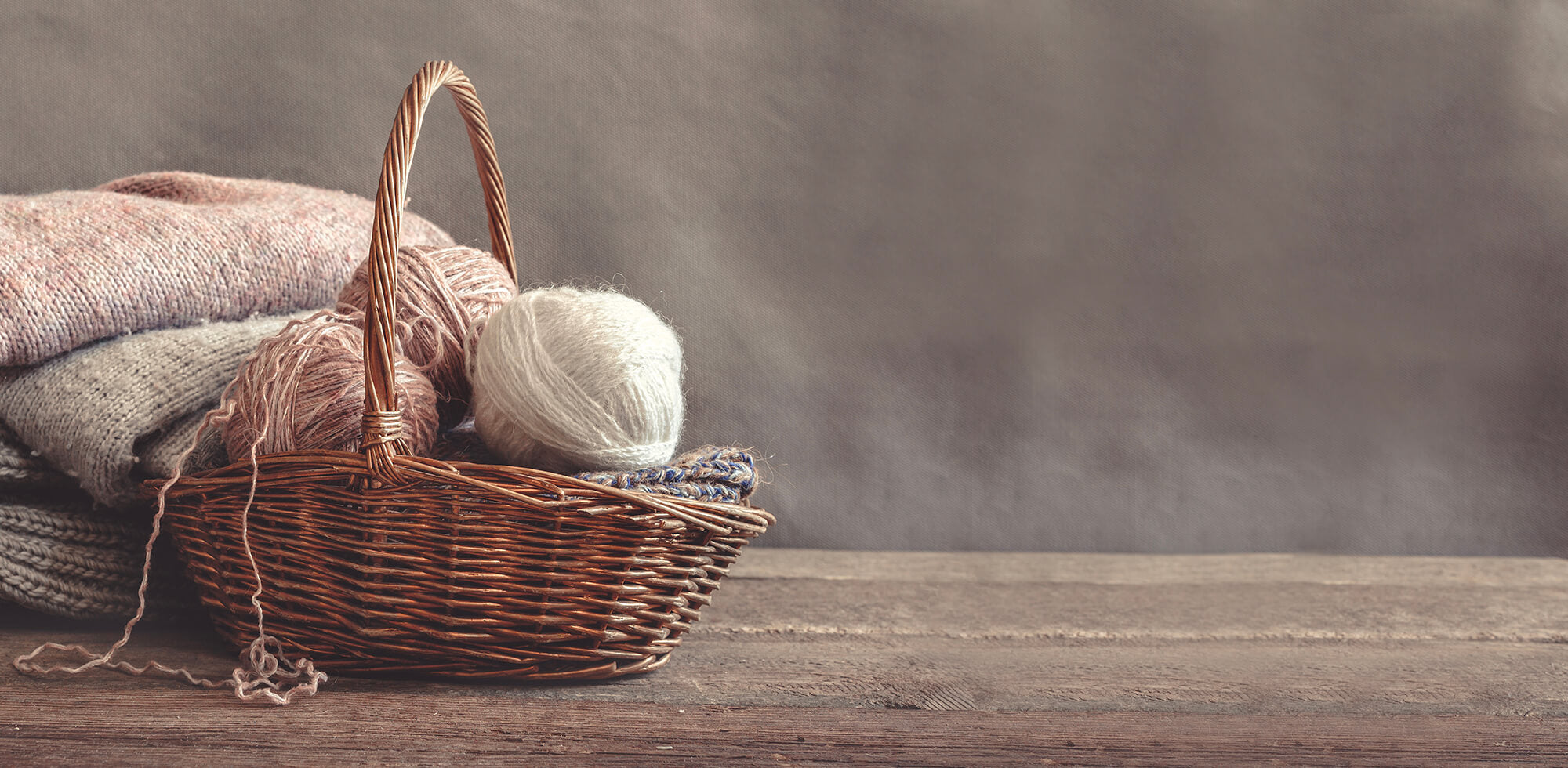By Pascuali
In many regions and languages, the word “wool” is used as a kind of generic term for all kinds of fibers, regardless their origin. For pure wool, blended fibers, fibers of animal origin, plant fibers, acrylics ... quite simply, wool can be used for many crafts including knitting, crochet, weaving and felting. Maybe it’s because of this woolis one of those long standing terms that hasstood the test of time.
But to be correct: Wool is the textile fiber obtained from the fleece of sheep and other animals.

Wool. Sheep.
Let's look at the wool classic, sheep. To produce wool from its fleece, the soft undercoat (in contrast to the top coat) is used. By shearing, the woolen fleece is removed. It is first washed, then plucked, in other words loosened, and then carded,which is the process used to comb the wool fibers, to prepare them for spinning.
There are estimated 500-600 different sheep breeds worldwide today. Probably all modern day sheep descend from the Armenian Mouflon, which was domesticated about 10,000 years ago. For approximately 5,000 years, sheep have been kept not only as a source of food, but also for their wool. About one billion sheep are kept as livestock worldwide. As the quality of meat, wool and milk differ from breed to breed, sheep tend to be bred according to their use. Sheep are also excellent landscape managers, and can often been seen grazing on dykes and heath land. Around 80 percent of all sheep could provide wool, but the wool differs considerably depending on the breed and the climate in which theylive. More than half of the world's domestic sheep population is raised for their fine wool (Source: German sheep breeders’ association VdL), 40 percent of which is Merino sheep, making them the top wool producing breed (Source: Wikipedia).

Merino wool – a favourite
Good wool has a high elasticity, due to the crimp of the wool fibers. High-quality Merino wool is very fine and very curly. Up to 40 ripples can appear in half an inch of fiber! It is therefore very suitable for spinning and felting. The fine nature of Merino wool fiber is what makes it so soft.This fineness is given in microns and refers to the diameter of the individual strands in micrometers (that is, in thousandths of a millimeter). The smaller the value, the finer and softer the fiber is.

We only stock the finest fiber qualities, such as ultrafine (below 17.6 microns - e.g. Saffira), superfine (17.6 to 19.5 microns - e.g. Merino Baby) and extrafine (19.6 to 22 microns - e.g. Pinta). For comparison: the average human hair is 50-100 microns in diameter, very fine human hair is 20-40 microns.
The fine fibers of Merino wool feel very soft when worn directly on the skin and are well tolerated, even by people with sensitive skin– the human sensitivity threshold is around 25 microns. Coarser fibers do not bend on contact with the skin and irritate the hair follicles: that is what we perceive as scratching or itching. If you are sensitive to even the softest Merino wool, you could try a Merino-silk blend like our Saffira - it couldn't be softer!
Merino wool is a very good temperature regulator. Due to their strongly curled structure, the fibers lie loosely upon each other to create air pockets. The air that is “trapped” between the fibers reduces the heat exchange in the fabric, asair is not a very good conductor of heat. The wool then stores body heat and insulates against outside temperatures.Wool can also absorb large amounts of moisture without feeling wet. It can absorb up to a third of its own dry weight! If you wear Merino wool clothing in the summer, you can perspire without the garment feeling as moist as, for example, cotton clothing would do. The moistureabsorbed by the fiber is dried bythe warm surrounding air,and evaporates, cooling you down. This makes Merino an ideal all year-round wool – keeping you warm in winter and helping you to stay cool in summer!
Where do Merino sheep come from?
Merino sheep probably originated from North Africa. In the Middle Ages, Merinos were taken to Spain where they gained great economic importance because of their much sought-after wool. From the 19th century, larger Merino herds were also raised in other European countries. European settlers eventually introducedMerino sheep to Australia and New Zealand. There are 74 million Merino sheep in Australia today. The country is the world’s main supplier of Merino wool, accounting for around 88 percent of the world's total. New Zealand, Argentina and South Africa each produce 4percent. The quantities coming from other countries are so small that they are statistically irrelevant. (Source: Destatis/German Federal Statistical Office)

Merino sheep in New Zealand (Source: unplash.com)
The amount of wool yielded from a Merino sheep per shearing is an average of 2 to 4 kilograms (after washing). "Top animals" yield up to10 kilograms of wool.
In Australia, Merino sheep have been bred to yield as much fleece as possible. More fleece means more skin, resulting in deep skin folds. This, however, poses a big problem, and here we have to face a really unpleasant aspect of Merino wool production.
Mulesing
The skin folds make the Australian Merino sheep the perfect host for a species of blowfly. The flies (Lucilia Cuprina) are attracted by the warm, humid environment created by the urine and faeces-soaked wool surrounding the buttocks of the sheep. This is where they lay their eggs, and the hatched maggots burrow into the sheep'sskin.
As a result of the infestation, inflammation and often the death of the infected animals occurs. To prevent fly strike, the lamb's skin around the anus is cut off. Named after the "inventor" of this method, John W.H. Mules, this procedure is called Mulesing. After healing, the fleece and wrinkle-free skin that remains prevents parasite infestation. Unfortunately, it is still common practice in Australia to subject lambs to this procedure without anesthetic and analgesics.
Could you really enjoy using wool for hand knitting or a knitted garment knowing that the sheep had to endure such incredible torments? Proponents of Mulesing claim that a sheep, when infested by flies, suffers unbelievably. Without Mulesing, three million Merino sheep would become infected with fly maggots every year.
Of course, nobody wants that, but is it really necessary to carry out the procedure without an anesthetic? Unfortunately, this is still allowed under Australian law, with only a few sheep breeders voluntarily using narcotics and painkillers. Only 10 percent of all Australian Merino sheep are not Mulesed at all. Instead, they are regularly shorn in the affected area or treated with pesticides, both of which are very time-consuming and costly (Source: German Animal Welfare Association/Deutscher Tierschutzbund).
Furthermore,the use of pesticides is probably not the best solution. So what could be done to solve this problem?
According to experts, the wrinkles have togo, not by cutting them off, but through breeding programs that remove the excess folds and wrinkles from the sheep's gene set.
What can we do against Mulesing?
As consumers, we are fortunate to have freedom of choice over what we buy. In New Zealand and South Africa, Mulesing has now been banned; in South America, this particular species of fly does not exist due to the climate. Assuming you want to knit with wool that is guaranteed to be Mulesing free, you could choose to buy Merino wool originating only from those countries. It is in your hands whether or not lambs have suffered for your hobby.
At Pascuali you can be absolutely sure - our wool is Mulesing free! The welfare of the animals is absolutely paramount to us. We pay visits to inspect our local suppliers to make sure the animals are doing well. Proper husbandry is a must for us. Our Merino wool comes exclusively from South America, making it easy for you to knit without having a bad conscience!
If you decide to buy Merino wool elsewhere (which we would very much regret, of course!), then please make sure that you only buy wool that is labeled as Mulesing free (or "non Mulesed").
What about certificates?

The Global Organic Textile Standard (GOTS) is the worldwide leading textile processing standard for organic fibers. Backed up by independent certification, it includes ecological as well as social criteria for the entire textile supply chain.
Buying GOTS labeled wool, means thatthe consumer can be sure that the sheep did not have to endure Mulesing. Furthermore, no environmentally hazardous chemicals may be used in the processing of GOTS-certified wool. The finished yarn is subject to strict controls for harmful residues. Last but not least, fair treatment of workers is one of the criteria that have to be fulfilled in order to obtain GOTS certification. The terms organic or eco are not clearly regulated for textiles in many countries, so misuse cannot be excluded. In addition, it is not always obvious to the consumer whether the entire product or only a single part of the production process was organic. For example, the sheep could have been kept organically, but the wool may have been produced under unfair, health-endangering working conditions with the use of chemicals. Or the finished yarn is free of harmful residues, but the sheep would have endured painful Mulesing. GOTS is currently regarded as the most demanding label for the mass market with ecological criteria throughout theentire production process. It is worth bearing in mind though, that certification also depends on the size of the farm. It does not always follow that every small company or shepherd of a small herd that does not have certification is using bad working methods! Certification costs are often just too high.
This is why at Pascuali, we also offer un-certified yarns. We primarily support small farmers and farms that simply cannot afford certification like GOTS. If we insisted on the certificates, we would be putting them under unnecessary financial pressure. Instead, we travel to the particular regions ourselves and get our own picture of the conditions on site. Our requirements are often even higher than those of most textile certificates! We very carefully choose which products to include and not to include in our range.
There are various other seals to choose from, but they are not as comprehensive as GOTS - as they are usually limited to individual aspects of the process.
At Pascuali, we carry the following yarns containing wool from South America:
Merino Baby: 100 % wool (Merino superfine, Superwash, Mulesing free)
Origin of fiber: Patagonia (Arg.) and Uruguay
Saffira: 75 % wool (organic Merino ultrafine, Mulesing free), 25 % silk (mulberry silk)
Origin of fibers: wool - South America (GOTS certified), silk - China
Pinta: 60 % wool (Merino extrafine, Mulesing free), 20 % silk (mulberry silk), 20 % ramie
Origin of fibers: wool – Patagonia (Arg.), ramie - Nepal, silk - China
Tibetan: 70 % wool (Merino ultrafine, Mulesing free), 30 % yak
Origin of fibers: wool - South America, yak - Mongolia
Nube: 100 % wool (Peruvian wool, Mulesing free)
Origin of fiber: Peru
We really hope you have enjoyed this little trip into the world of wool, and maybe even learnt something new. This would make us very happy!
We will be posting more little woolly background stories in our blog from time to time. So stay tuned!



